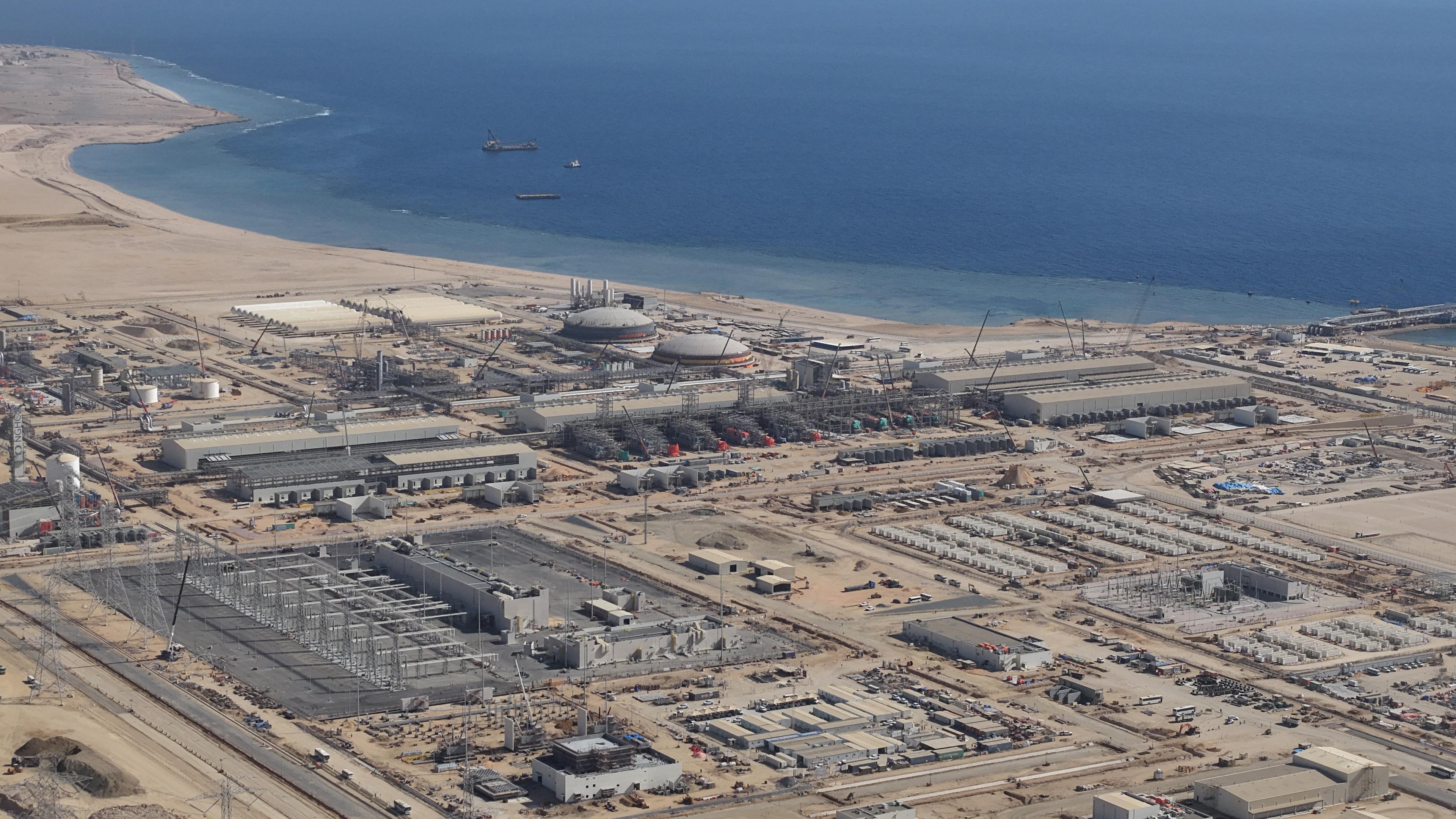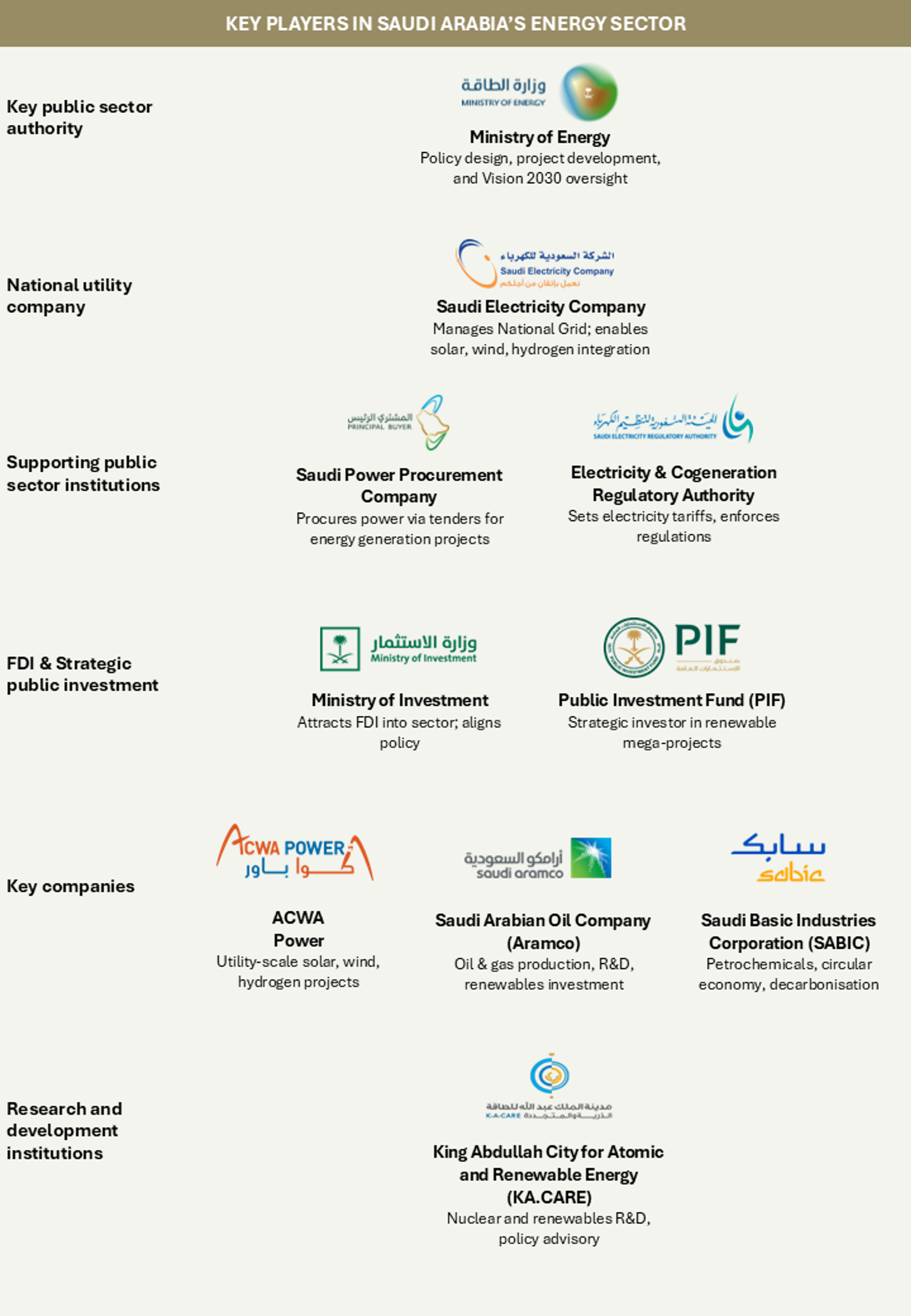Wednesday, 16 July, 2025
Powering the future
How pragmatism, commitment and innovation underlie Saudi Arabia’s bold renewable energy transformation
Shahad Alsubaie - Inside Saudi

Saudi Arabia’s Ministry of Energy, led by HRH Prince Abdulaziz bin Salman, is the key driving force behind the transition
Saudi Arabia and oil are inextricably linked – but as our Energy Report shows, some of the most interesting developments in the Kingdom are in the renewables sector. This is the second of our summer series of in-depth analyses of key sectors, providing our readers with an in-depth understanding of what is really going on in the Saudi market, both on the ground and in the policy sphere.
As the global energy paradigm shifts toward sustainability, Saudi Arabia is emerging as a bold architect of the future and redefining its position from an oil powerhouse to a pioneering force in renewable energy.
At the heart of this transformation is the Ministry of Energy, whose leadership is shaping constructive policies, fostering innovation and a thriving ecosystem, and catalysing foreign direct investment (FDI) across clean energy sectors.
The Kingdom has committed to generating 50% of its electricity from clean sources by the end of the decade. Anchored in Vision 2030, this goal is not merely aspirational – as His Royal Highness Prince Abdulaziz bin Salman, Minister of Energy, stated clearly at the 2023 Saudi Green Initiative Forum: “This is not an option but a necessity for a sustainable future”.
Saudi Arabia has considerable natural advantages. The Kingdom boasts one of the highest solar irradiance levels worldwide: over 2,200 kWh per square metre annually, or almost two-and-a-half times the South West England average. In addition, vast proportions of the sun-drenched nation are uninhabited and wind corridors are consistent, particularly across the northwest and central regions. Together, these exceptional conditions uniquely position the Kingdom to lead the renewable transition.
Landmark projects are turning bold statements into factual reality and setting new benchmarks in scale, cost-efficiency, and technological excellence. This includes the Sakaka photovoltaic plant (300 MW installed capacity), the Kingdom’s first utility-scale solar installation, and the massive 1.5 GW Sudair Solar Project. Beyond solar power, the Dumat Al Jandal Wind Farm is the largest operational wind facility in the Middle East, with installed capacity of 400 MW. Having been developed at a cost of $500 million by a consortium including EDF and Masdar, it also stands as a testament to international collaboration.
One of the most ambitious undertakings globally is NEOM Green Hydrogen Company (NGHC), an $8.4 billion joint venture between ACWA Power, NEOM, and US-based industrial gases company Air Products. This initiative aims to establish the world’s largest green hydrogen facility by 2026 and when completed, the facility is expected to produce 600 tonnes of hydrogen daily using 100% renewable energy sources.
Designed to serve both domestic industries and global markets, the NGHC facility has previously been noted by HRH Prince Abdulaziz as representing “a pivotal shift toward innovation in clean fuels” and a project which “opens broad horizons for investment in technology transfer, research collaboration, and global supply chains.”

Such a massive expansion of renewable energy power generation capabilities requires an effective infrastructural backbone. The electricity distribution sector has seen a great deal of technological advancement over the past few decades, and modernising the grid has been consistently one of the main objectives of the Saudi government.
The Ministry of Energy is spearheading comprehensive infrastructure modernisation, driving digitalisation and resilience by encouraging adoption of cutting-edge technologies such as advanced smart grids, intelligent metering systems, AI-powered energy management, and utility-scale energy storage. These advancements open significant commercial opportunities for technology, engineering, and manufacturing firms, especially those looking to localise operations within the Kingdom’s thriving industrial zones.
In addition, by liberalising the energy efficiency market, the Ministry is creating fertile ground for the private sector and international firms to implement solutions across public and private facilities that align directly with Saudi Arabia’s objective to reduce energy intensity and enhance environmental stewardship across all industrial and residential sectors.
Given the sheer size of its market, the pace of the transformation, and the regulatory and financial support provided by government authorities and sovereign financial entities, Saudi Arabia presents a compelling destination for global firms to establish regional production hubs serving the MENA region and Europe, supported by top-tier logistics and trade corridors.
The Public Investment Fund (PIF) also plays an important role. Its Governor, Yasser Al-Rumayyan, is clear on PIF’s commitment to being “a key driving force supporting renewable energy projects in the Kingdom. We focus on building strategic partnerships to strengthen Saudi Arabia’s position as a global clean energy hub.”
Environmental and technological research and development and innovation are key pillars of the Kingdom’s sustainable development strategy. Saudi Arabia is a pioneer in technologies such as carbon capture, utilization, and storage (CCUS), industrial waste recycling, and digital compliance systems. In addition, strategic partnerships between leading universities, global tech firms and R&D centres are driving breakthroughs and, with support from dedicated funds and innovation platforms, translating cutting-edge science into commercially viable solutions.
All of these initiatives lay the groundwork for sustainability-led investment and industrialisation and contribute directly to the objectives of the Saudi Green Initiative, the Kingdom’s long-term sustainable action plan, and the Middle East Green Initiative, a regional effort being led by Saudi Arabia.
For institutional investors seeking measurable climate contributions, there is a diverse and rapidly growing landscape of high-impact, ESG-aligned investment avenues. The Ministry of Energy’s Renewable Energy Initiative offers solar and wind energy projects via transparent and competitive tenders, and NEOM Green Hydrogen Company continues to make headlines as one of the world’s most ambitious hydrogen projects, opening doors to investment in clean fuel technologies, logistics, and international trade.
At the same time, enabling frameworks in place guarantee contract enforcement, access to international arbitration, and equal treatment for foreign investors – developments that have been applauded by global stakeholders. In addition, streamlined licensing and strong intellectual property protections mitigate risk and reinforce the Kingdom’s appeal as a long-term destination for global investment.
As international priorities shift toward decarbonisation, energy security, and climate resilience, Saudi Arabia’s intention in the energy field is clear: being a forward-thinking market leader. The Ministry of Energy’s leadership has positioned renewable energy not only as a domestic priority but as a magnet for global capital and a vehicle for shaping a more sustainable and inclusive future.
As Saudi Arabia’s Minister of Investment, Khalid Al-Falih, has remarked: “The transition to a green economy is the optimal path to enhance the Kingdom’s energy and economic security. We are committed to supporting innovation and adopting cutting-edge technologies to achieve this goal.”
During the Saudi-US Investment Forum in May, Inside Saudi had a privileged opportunity to witness the Ministry of Energy’s role as a bridge between domestic opportunities and international capital. At the forum, the Ministry presented key energy sector achievements particularly in renewables and green hydrogen and showcased the Kingdom’s supportive regulatory environment and financial incentives. Bilateral meetings resulted in the signing of several memoranda of understanding with American and global companies, helping to establish the foundations for long-term industrial and energy sector partnerships and highlighting the Kingdom’s commitment to embedding its renewable energy sector within global value chains.
Driving this agenda is the Ministry of Energy’s Vision Realization Office (VRO), which plays a central role in converting long-term strategies into actionable, high-impact projects, supported by key performance indicators and measurable impact assessments which are regularly published. This institutional backbone ensures the continuity and accountability of Saudi Arabia’s energy sector transformation programme, giving confidence to global investors and technology partners.

Livio Gallo, Senior Advisor to Invescore, a leading investment and advisory firm with deep roots in Saudi Arabia, and former Head of Global Infrastructure & Networks at Enel, has long observed and participated in the Saudi energy landscape. He is enthusiastic about the Kingdom’s renewables transformation.
“Saudi Arabia’s energy transition deserves recognition and appreciation for its strategic pragmatism, growing commitment to diversification and forward-looking innovation when compared with Europe’s gradual regulatory-driven path.
“When looking at Saudi Arabia’s energy strategy we can see a deliberate, resource-aware strategy tailored to its unique economic and geopolitical context. The Ministry of Energy has charted a transition model in infrastructure development, energy technology and sustainable urban planning based on long-term investment that is unmatched in scale and lays the foundation for a resilient and economically viable future energy transition.”
The energy sector is one of the primary drivers of global economic activity and countries with clear and forward-looking energy policies are better positioned to navigate market volatility and protect long-term economic interests.
Inside Saudi believes that what is unfolding in the Kingdom is not a policy experiment, but solid execution of a blueprint for a sustainable and resilient economic transformation that will not only create jobs but also build international competitiveness.
By simultaneously developing renewables, oil, petrochemicals, mining, tourism, and logistics, Saudi Arabia is undertaking a bold strategic pivot from being a traditional fossil fuel exporter to becoming a diversified, technology-driven central player in the global clean energy economy and a hub for innovation. The Kingdom is investing heavily in the tools, talent, and systems that will define the global transition.
Given the top-down leadership and support, technological readiness, institutional strength and Saudi Arabia’s natural geographical advantages, the Kingdom offers one of the most compelling clean energy investment narratives in the world. Looking ahead, the expansion of the energy efficiency product and services market, growth in digital infrastructure, and localisation of manufacturing will create additional momentum.
We look forward to chronicling the Kingdom’s transformation in our upcoming reports. Our next energy sector report will delve deeper into the most significant projects shaping the renewables landscape, as well as the key public and private players driving innovation, execution, and capital deployment, including exclusive interviews with key decision makers.
Images used with the support of the Ministry of Energy and NEOM Green Hydrogen Company.
